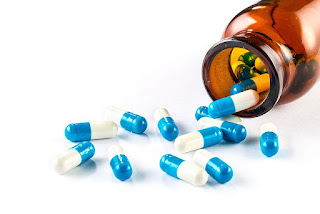Molecular
spectroscopy refers to spectroscopy techniques used to analyze molecules and
provides information about their structure. These techniques detect light
absorbed or emitted by molecules to generate molecular fingerprints and
insights into structural information through measuring electromagnetic spectrum
or mass. Molecular spectroscopy finds extensive use in pharmaceutical industry
for quality control, new drug development, and clinical diagnostics. The
techniques allow non-destructive analysis of samples without requiring
reagents. The growing pharmaceutical industry relies on molecular spectroscopy
for rapid analysis of drugs, impurities, and other biomolecules. The global
Molecular Spectroscopy Market is estimated to be valued at US$ 2.3 billion in
2023 and is expected to exhibit a CAGR
of 16% over the forecast period 2023-2028, as highlighted in a new report
published by Coherent Market Insights.
Market key trends:
The increased adoption of molecular spectroscopy techniques in the
pharmaceutical industry is one of the key trends driving the market growth.
Pharmaceutical manufacturers are using molecular spectroscopy tools to speed up
drug development processes and ensure high product quality. Near-infrared (NIR)
spectroscopy is increasingly being used for in-line quality control during
pharmaceutical production. NIR analysis provides accurate, non-destructive
measurements and has replaced traditional wet chemical methods. Growing demand
for improved drug efficacy and safety is prompting pharmaceutical companies to
integrate molecular spectroscopy at various stages of drug manufacturing such
as raw material identification, in-process and finished product analysis, and
dissolution or impurity testing. This is expected to push the adoption of
molecular spectroscopy solutions in the pharmaceutical industry over the
forecast period.
Segment Analysis
The global molecular spectroscopy market is dominated
by infrared spectroscopy sub-segment. Infrared spectroscopy finds widespread
applications in diverse industries such as pharmaceuticals, biotechnology,
chemicals, food and beverages among others. It is the most widely used
technique for qualitative and quantitative analyses as it can detect different
functional groups of molecules by exploiting the fact that molecules absorb
specific amounts of energy in the infrared region.
Key Takeaways
Regional analysis: North America currently dominates the global market and is
expected to maintain its leading position during the forecast period. Presence
of major research institutes and laboratories in the region is driving the
demand for molecular spectroscopy technologies. Asia Pacific region is
projected to showcase highest growth in the molecular spectroscopy market owing
to increasing government investments in life sciences sector and growing number
of CROs and pharmaceutical companies in countries like China and India.
Key players: Key players operating in the molecular spectroscopy market are
Thermo Fisher Scientific, Agilent Technologies, Danaher Corporation, Bruker
Corporation, Shimadzu Corporation, Waters Corporation, PerkinElmer, JEOL Ltd.,
JASCO International Co., Ltd., FOSS, and HORIBA Ltd. Thermo Fisher Scientific
Corporation holds the leading market share in terms of revenue owing to its
diverse product portfolio in spectroscopy instruments. Agilent Technologies
specializes in integrated chromatography-mass spectrometry solutions and Bruker
Corporation offers a wide variety of analytical instruments for molecular
spectroscopy.




Comments
Post a Comment